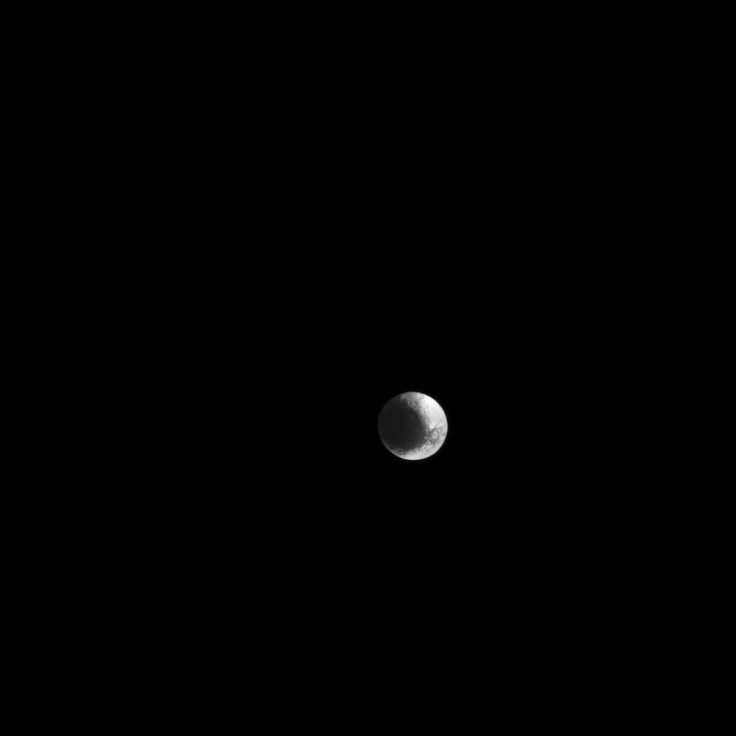NASA’s Cassini Shows Saturn Moon Iapetus And Its Two-Toned Contrasting Surface

The Cassini spacecraft, which is in its Grand Finale mission, sent back a photograph of Saturn’s third-largest natural satellite, Iapetus, that shows the moon in its distinctive two-toned appearance. Looking something like a black-and-white tennis ball, regions on the surface of Iapetus are remarkably contrasting.
The photograph, taken in visible light using Cassini’s narrow-angle camera, shows the “light and dark regions fitting together like cosmic puzzle pieces,” a NASA statement that accompanied the image release Monday said.
Read: Saturn’s Icy Moon Enceladus May Have Tipped Over In The Past
The dark region seen in the image is called Cassini Regio, in honor of Giovanni Domenico Cassini, the Italian astronomer who discovered Iapetus in October 1671 and whose name also lends itself to the spacecraft that captured this image. The layer of “dark, dusty material” that covers Cassini Regio, reducing its reflectivity to only about 4 percent, is thought to be quite thin. But scientists are unsure of how that region — an entire hemisphere — got its dark material.
Some of the theories about the origin of Cassini Regio include eruption of dark material from the interior of the moon, or accumulation of debris that was ejected by impact events on the dark, outer moons of Saturn.
The bright region of Iapetus is called Roncevaux Terra. The two regions look so contrasting because the icy terrain of the brighter regions has reflectivity of as high as 60 percent, especially near the moon’s north pole.
Almost exactly along the geographical equator of the satellite runs a ridge, visible in a visible-light image captured by Cassini in 2004. This ridge is about 12 miles wide and has mountain peaks that tower 8 miles over the surrounding terrain. By comparison, the peak of the tallest mountain on Earth, Mt. Everest, is 5.5 miles above sea level. The origin of this ridge is unknown, but it makes the shape of Iapetus look walnut-like, neither spherical nor ellipsoid as is common among moons, especially the larger ones.

The photograph released Monday was taken March 11 and shows the Saturn-facing side of Iapetus, which is tidally locked to its host planet, just like the moon is to Earth. North on Iapetus is rotated 20 degrees to the right in this image, which was obtained from a distance of about 1.6 million miles.
Read: Cassini Captures Canyon On Saturn Moon Tethys
After the discovery of Titan in 1655, Iapetus was one of the first four of the Saturnine moons to be discovered by Cassini. It is 1,470 miles across and despite being the third-largest moon of Saturn, has a relatively distant orbit which is also very inclined. Its orbit also makes Iapetus the only large moon from which Saturn’s rings would be clearly visible instead of being edge-on.
Given the distance from Saturn, Cassini has mostly imaged Iapetus from relatively far away. Only one targeted close fly-by of the satellite was made on Sept. 10, 2007, when the spacecraft went as close as 726 miles from the moon.
Cassini is a cooperative project between NASA, the European Space Agency and the Italian Space Agency. The spacecraft will finish its last Grand Finale mission in September, after which it will plunge to its death in Saturn’s atmosphere.
© Copyright IBTimes 2024. All rights reserved.




















